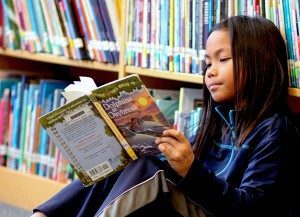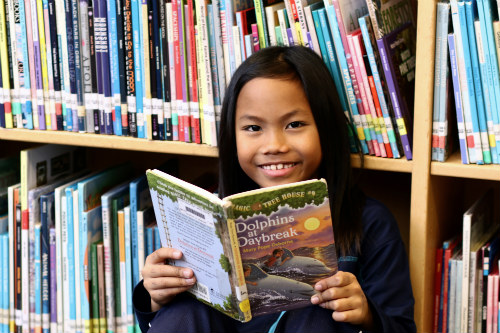Our blog post title above is in quotation marks because it is quoted from an article hot off the online press. Here are three quotations from that article:
- To help students master nonfiction reading, we must design instruction that builds their background knowledge.
- Prior knowledge affects comprehension—in many cases, far more than generic “reading skills” do.
- The ability to build knowledge by reading and to learn from texts is a crucial driver of student success. … It is crucial to equity because many students’ lack of background knowledge causes them to fall further and further behind.
The source? “How Knowledge Powers Reading,” in the February 2017 issue of Educational Leadership, published by the Association for Supervision and Curriculum Development (ASCD). The author? Doug Lemov, author of Teach Like a Champion, the book about effective teaching that has grown into a professional development movement.
If you’re familiar with Core Knowledge, then Lemov’s statements will strike you as eminently sound. Indeed, Core Knowledge founder E. D. Hirsch, Jr. has been making the case for the importance of prior knowledge and the need for knowledge-based reading instruction since the publication of Cultural Literacy in 1987.
 Lemov’s ASCD article offers guidance to teachers asked to incorporate more nonfiction in their reading instruction. He notes that “many language arts teachers approach nonfiction structurally. They perceive it as a genre and strive to help their students develop an overarching structural knowledge of that genre. They reason that, if students understand how information is presented, they will understand what they read.”
Lemov’s ASCD article offers guidance to teachers asked to incorporate more nonfiction in their reading instruction. He notes that “many language arts teachers approach nonfiction structurally. They perceive it as a genre and strive to help their students develop an overarching structural knowledge of that genre. They reason that, if students understand how information is presented, they will understand what they read.”
Lemov clearly explains that “how information is presented” is less important than what students know, since the text assumes (as all texts do) prior background knowledge. Lemov goes on to offer practical suggestions for “ways to weave prior knowledge into our students’ reading of nonfiction throughout the process of engaging them with texts.” (For more teaching strategies, see Lemov’s 2016 book from which his ASCD article is derived, Reading Reconsidered: A Practical Guide to Rigorous Literacy Instruction.)
One suggestion: “Ask knowledge-based questions.” Lemov is aware that many teachers have been “trained to think of such questions as second-rate or ‘not our job’”—after all, they’re at the bottom of Bloom’s taxonomy, mere facts as opposed to the higher-order skills of making inferences or interpreting motivations, right? Not quite, says Lemov. Through thoughtful examples, he shows how well-crafted “fact-based questions are actually surprisingly rigorous.”
Moreover, says Lemov, “if we don’t ask any such questions, we may be tacitly socializing students to believe that facts are irrelevant. By asking some fact-based questions, we can chip away at the knowledge deficit and teach our students how to unlock knowledge from what they read.”
Demonstrating by example that facts are relevant. Chipping away at the knowledge deficit. Filling in gaps in prior knowledge. These, we agree, are truly ways to teach like a champion.
